Plant description
Golden Pothos, also known as Devil’s Ivy, is the gold standard by which all companionable house plants (ie, those that don’t die) live – and yes, they just keep on living. The Golden Pothos is often the first of many Pothos that plant-parents welcome into the home, due to this species’ abundance of identifiable variations, flexible lighting needs and collectible charm. This is a great starter-plant or low-maintenance addition to any thriving plant family.
Devil’s Ivy is a robust climber with glossy and bright heart-shaped leaves, sometimes variegated with cream and yellow striations. This lush plant is one of the fastest-growing vines around and can be propagated without pre-soaking, making it ideal for just about any spot in the home, office or dorm in need of a jungly touch.
As the name suggests though, this plant is fairly poisonous. Keep it tucked away from children and pets.
Pothos plant facts
| common name | Ceylon Creeper, Hunter’s Robe, Devil’s Vine |
| botanical name | Epipremnum aureum |
| no. of varieties | 15 |
| family | Araceae |
| biological life cycle | perennial |
| foliage | evergreen |
| mature size | tendrils climb 20-40 feet in the wild, 3-5 feet wide |
| time to maturity | 10-20 years outdoors (only the juvenile form is grown indoors) |
| origin | Society Islands of French Polynesia (Mo’orea) in the South Pacific |
| light conditions | indirect, bright light to partial shade |
| soil type | well-draining soil mixtures with vermiculite, peat moss, or perlite |
| soil pH | slightly acidic (6.1-6.5) |
| USDA Zone | 10-12 |
| toxicity | poisonous to people and pets if ingested, irritation on contact |
Popular varieties of Pothos
Popular varieties of pothos include the Marble Queen Pothos (green leaves with white striation variegation), Jade Pothos (solid green leaves), Satin Pothos (green leaves with silver striation variegation) and Neon Pothos (green leaves with brighter green striation variegation).
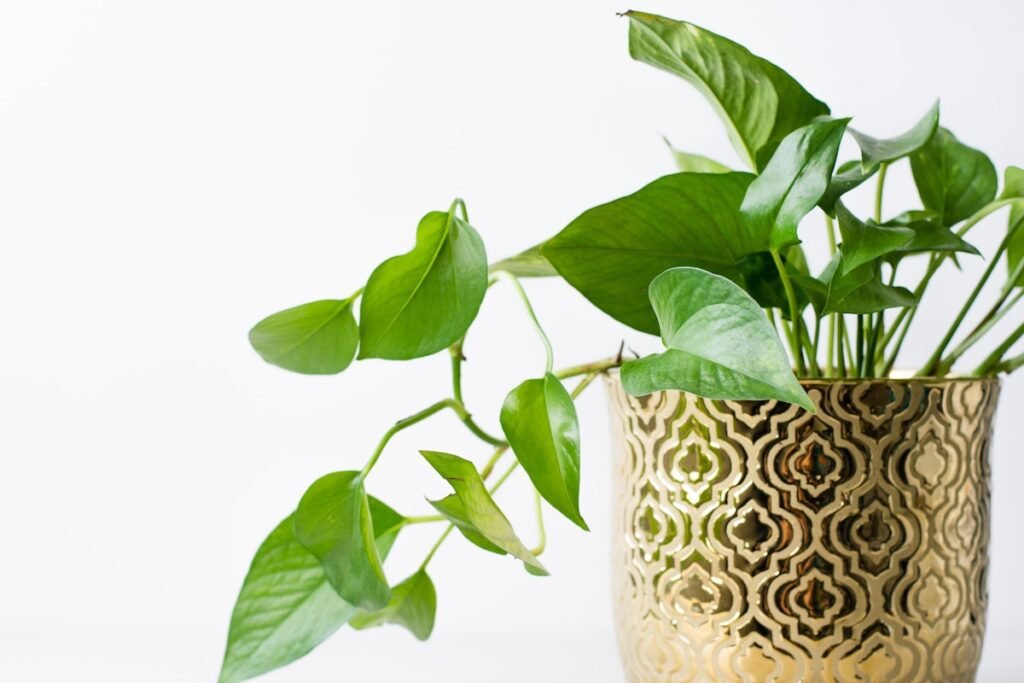
How to take care of a pothos plant
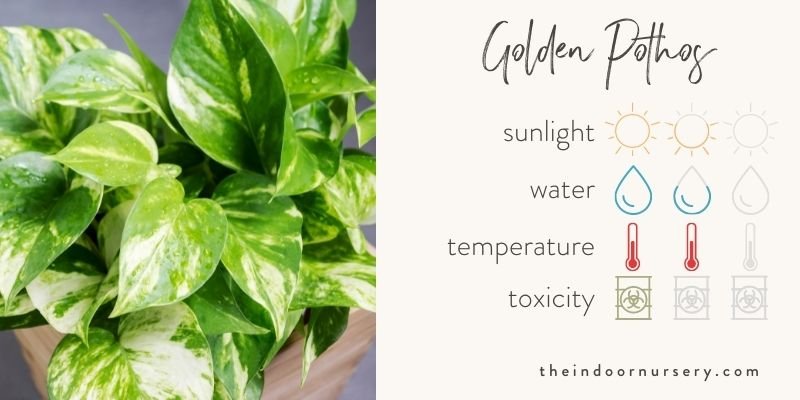
Light 🔆
Best light: indirect, bright light to partial shade
The Golden Pothos can tolerate a variety of lighting conditions from bright, indirect light to partial shade. The variegated colors on the leaves will become more pronounced in brighter lighting conditions. It’s important to note that the pothos plant does not like to be in direct sunlight. If the leaves start to look thin and pale, scoot it into the shade.
Water 💧
Water requirements: wait for soil to dry before watering
Allow for the soil to dry before watering Golden Pothos. The leaves will start to curl inwards when the plant is ready to be watered. Don’t wait to water your Golden Pothos until the leaves shrivel, develop brown edges or grow dry (but if you do, here’s how to save an underwatered pothos.) With a shallow root system, the Golden Pothos needs less water than you might think to hydrate its cascading foliage. Water slowly and stop when you see liquid draining into the pot tray. Avoid overwatering your Golden Pothos, which may lead to root rot, black-spotted leaves, or wilting.
Humidity 🌫️
humidity preferences: Pothos plants originate in tropical areas that can experience relative humidity levels between 80-90%, so it never hurts to mist them!
The Golden Pothos enjoys a high humidity environment, though it can and will thrive almost anywhere indoors. To increase moisture in the air, spray the leaves occasionally or place your plant in a higher humidity area like a bathroom, mudroom, or kitchen window sill. Use a water-filled pebble tray near the plant to increase local humidity levels, especially if placed near other moisture-loving tropical plants.
Temperature 🌡️
As a plant native to the South Pacific, Pothos do best in temperatures between 65F (18C) and 85F (29C).
Fertilizer 💩
fertilizer preferences: Fertilize the Golden Pothos once every four to six weeks during the growing season (spring-summer) with a balanced, all-around fertilizer to encourage growth. Don’t fertilize at all during the cold months when growth slows.
Soil
soil type: well-draining soil mixtures with vermiculite, peat moss, or perlite
pH level: slightly acidic (6.1-6.5)
A basic, well-draining potting mix is recommended for the Golden Pothos, such as vermiculite, peat moss or perlite in the slightly acidic pH range, though this plant won’t complain much! The soil should be well-aerated to stay moist and drain well though, so in a pinch, simply mix a handful of perlite into whatever soil you have on hand.
As an alternative to soil, the Golden Pothos can also grow directly in water alone with a glass container. The water should be changed every 2-3 weeks. Amend with fertilizer as you would in soil. If the water starts to look brackish or algae grows on the roots, scrub any algae away with a clean cloth and change the water more frequently.
Repotting
As the Golden Pothos can grow quickly, it’s common for the roots to become pot-bound. Pothos roots can handle a bit of squeeze, but if the roots begin to spiral around the bottom of the pot or the root ball becomes too dense, it’s time to repot into a larger container. Check the roots by removing the liner pot once every three to four months for signs of overgrowth.
Use a pot around 2” larger in diameter than the old pot to help the plant grow without shocking its roots. Trim away some roots and foliage, and repot with new potting soil to stimulate growth. It’s best to repot Golden Pothos during the summer and spring months when growth is steady, but these hardy plants can be repotted at any time of the year.
Propagation 🌱
Golden Pothos is easy to propagate. The small plants make great gifts! Note that cuttings typically continue to grow in single vines, so if you are growing your plant from a cutting and are hoping for a full mane of foliage, you’ll need to place several cuttings in a single container. Begin by snipping off 4- to 6- inch pieces from your healthy Pothos at the base of leaf nodes (small brown nubs on the stem), including about one leaf per inch.
Once you have your cuttings, trim the bottom leaf from each piece, so about 2 inches of stem are exposed. From here, set the stems directly in water and grow for 3-4 weeks. Transplant to individual pots to establish root growth, and the re-pot as desired.
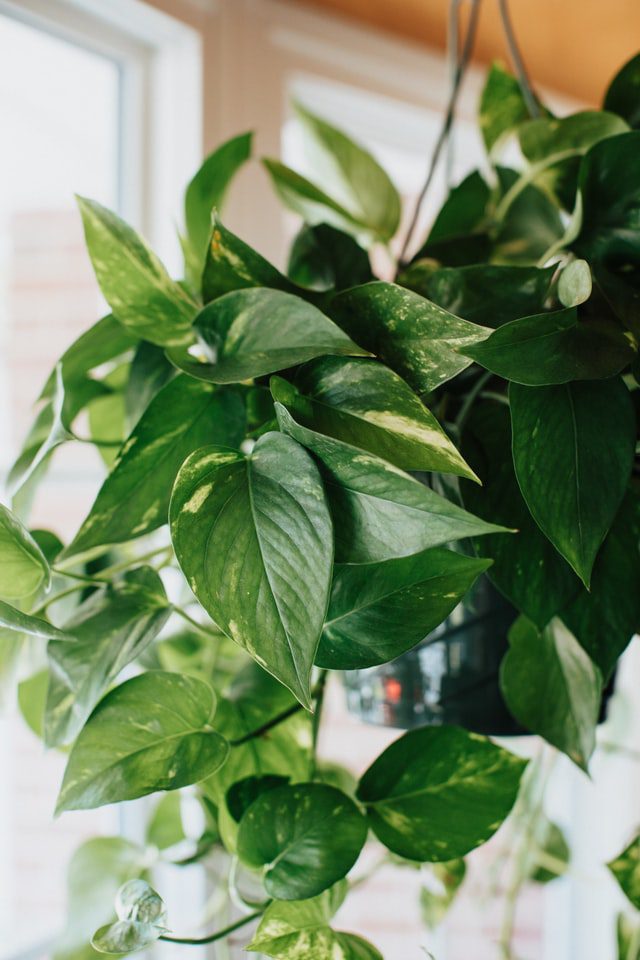
Pruning 🌿
With fast growth and strong hardiness, the Golden Pothos can handle a pruning at any time of year if it’s becoming too large. Prune at the base of leaf nodes for best results.
Training vines to climb
Pothos can grow up to 40 feet long, climbing or hanging. Pothos plants, similar to Philodendron plants, use aerial roots to climb and absorb nutrients and moisture from the air. These roots first appear as short, brown nubs on the vine at the base of leaf nodes in juvenile plants, and will grow into aerial roots as plants mature.
To train the Pothos vine to climb, gently wrap vines on a stake or trellis using string if necessary. Another great option to train plants to grow upward is a moss stick or moss pole. The pothos plant will grow around supports, and strings can eventually be taken off as the vines and aerial roots develop. Maintaining stable humidity for Golden Pothos with misting can help to encourage faster growth and vining.
Pests and diseases 🐛
pests: susceptible to mealybugs and spider mites
The Golden Pothos is generally pest-free, but is occasionally susceptible to mealybugs and spider mites. These can be removed with an alcohol-soaked cotton swab or insecticidal soap.
Pothos plant care tips
- To keep leaves clean and free of dust, spray leaves with water once a week.
- During the winter, try watering your pothos from the bottom to keep the soil moist but not soggy.
- Before purchasing, check the health of your Pothos by inspecting its roots. Pass on any plants with roots that look rotted or mushy, two common signs of overwatering.
Common Problems / FAQs:
1. Yellow leaves
→ check the soil to see if the plant is being overwatered or underwatered
2. Black spots or sudden plant collapse
→ it’s possible that the pothos is being overwatered, or that the soil is too wet (not well-draining). Ensure that the plant pot’s drainage holes are clear of debris that may prevent moisture release, and empty the saucer after watering.
3. Dry brown edges
→ It’s most likely the plant was kept dry too long. If the plant has been left without water for an extended period, soak dry soil in a bowl in the kitchen sink, allow excess water to drain, and repot. Additionally, make sure that the plant is not receiving too much direct light.
Shop our recommendations
- The Best Hydroponic Tower For Indoor Gardening
- 10 Best Worm Composter Bins For Easy Homemade Compost
- The Best pH Meter For Soil
- The 6 Best Dehumidifiers For Grow Tents
- The Best Complete Indoor Hydroponic Grow System
- 5 Best Grow Light Strips For Indoor Plants
- TESTED: Aerogarden vs Click and Grow Smart Garden
- Our *hands on* MARS HYDRO TSW 2000 review (with photos)
- 7 Best Hygrometers For Indoor Plants
- The Best Coco Coir For Your Plant’s Healthiest Root System Ever

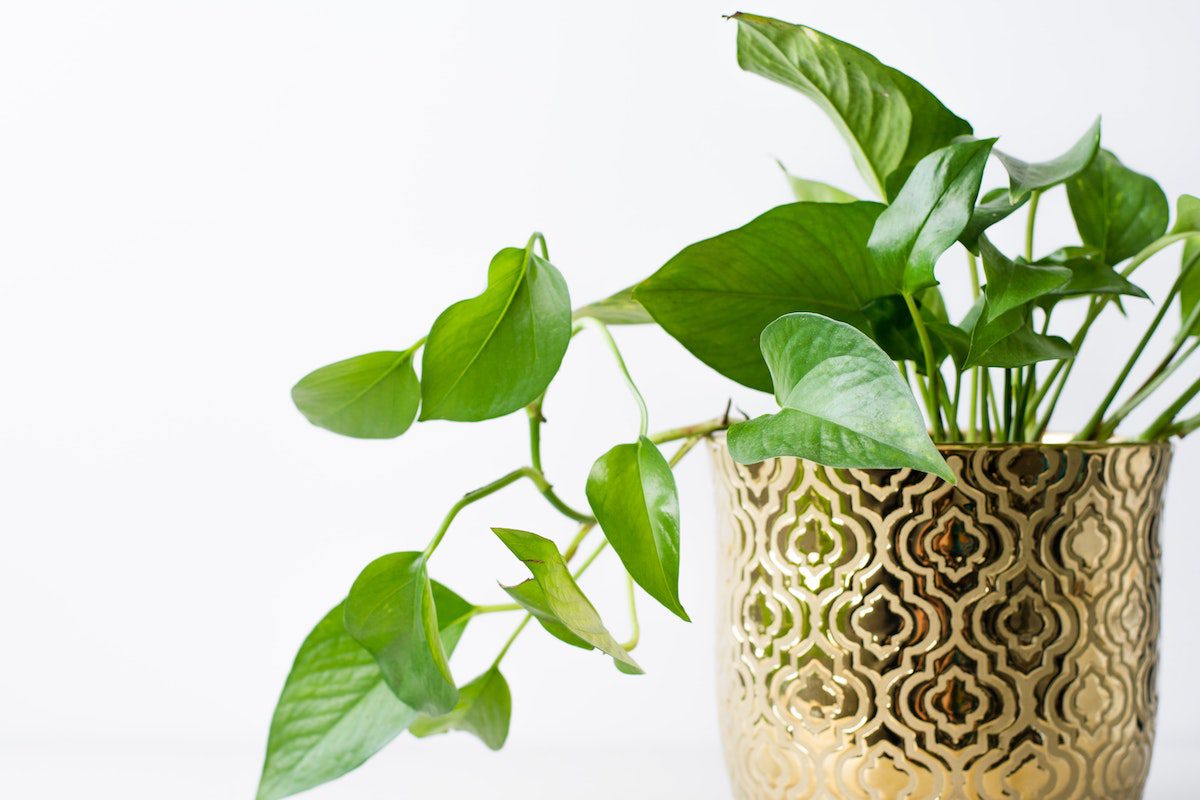
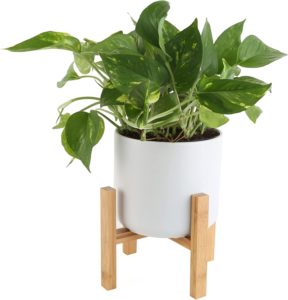





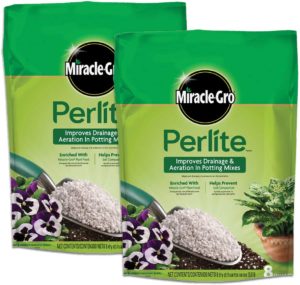
Hey, Marcia! Thanks for reading :) gosh, that's a great idea to double up on your watering globe and spike.…